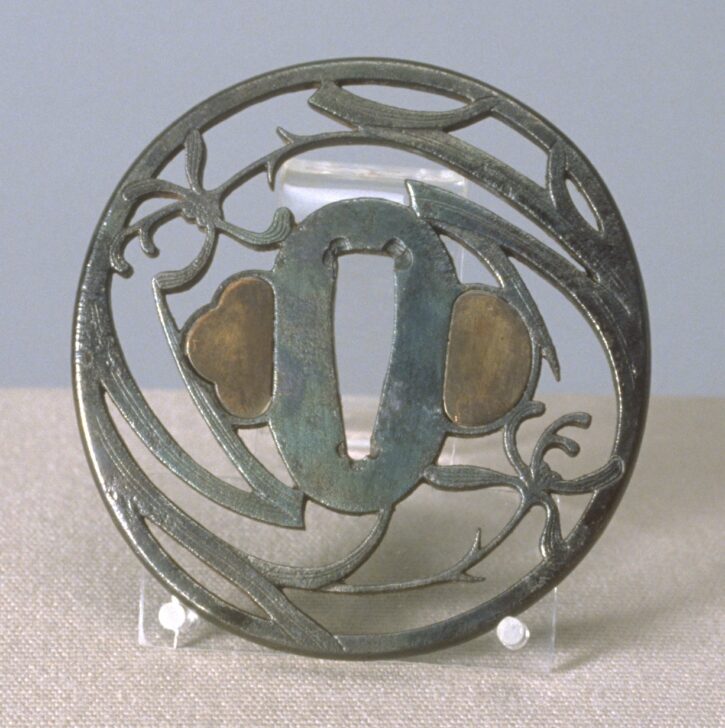Tsuba (sword guard) with iris design
Japanese

Description
Tsuba are intended to protect the user’s hand, first by shielding it against a blow from the opponent’s blade, and second by preventing it from slipping onto the razor-sharp edge of the weapon being wielded. Until the early seventeenth century, simply designed iron tsuba were dominant, as seen in the example here bearing a mushroom motif. When the Tokugawa regime required samurai warlords to travel regularly to the capital, Edo, and mandated that their wives and children reside there, considerations of urban fashion became more influential than battlefield practicalities in samurai attire and accessories. The tsuba became more an object of display than a functional item—a trend that further intensified when affluent merchants were permitted to carry swords in public and also began to demand attractive tsuba.
As is well represented by this collection, there was great artistic creativity at play in tsuba-making during the Edo period. The newly developed shakudô (a copper–gold alloy of a lustrous purple–black color) was used to create relief designs. Openwork chiseling was a versatile method for creating dramatic representations of family crests or light, airy, and elegant plant motifs.
(Label for UMMA Japanese Gallery Opening Rotation, March 2009)
Subject Matter:
Tsuba (sword guard) is inserted between a sword handle and blade to protect hands from sharp blades. The center hole is where the sword is placed. The smaller hole is to insert kozuka, an ornamental stick. Irises are popular motifs in Japanese art, for their association with Tale of Ise, classical literature from the Heian period (794-1192).
Physical Description:
It is a round, openwork iron tsuba, in the design of three interconnected irises. The two holes are plugged with gold.
Usage Rights:
If you are interested in using an image for a publication, please visit https://umma.umich.edu/request-image/ for more information and to fill out the online Image Rights and Reproductions Request Form.